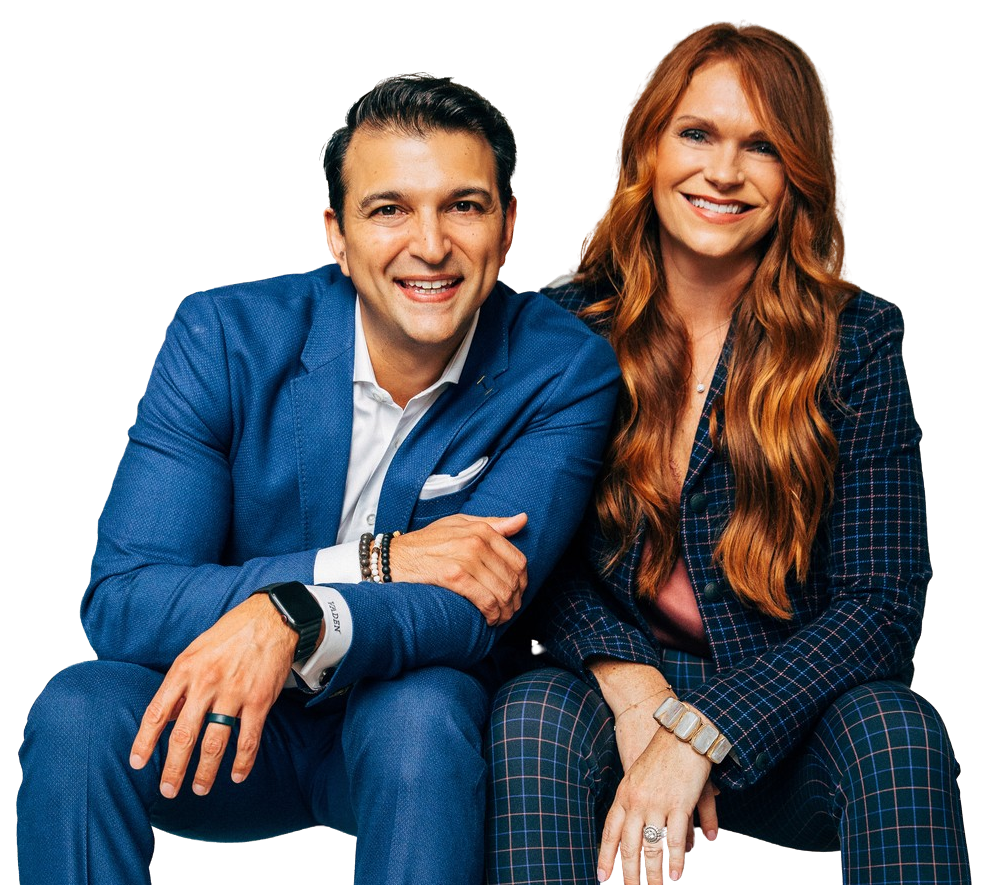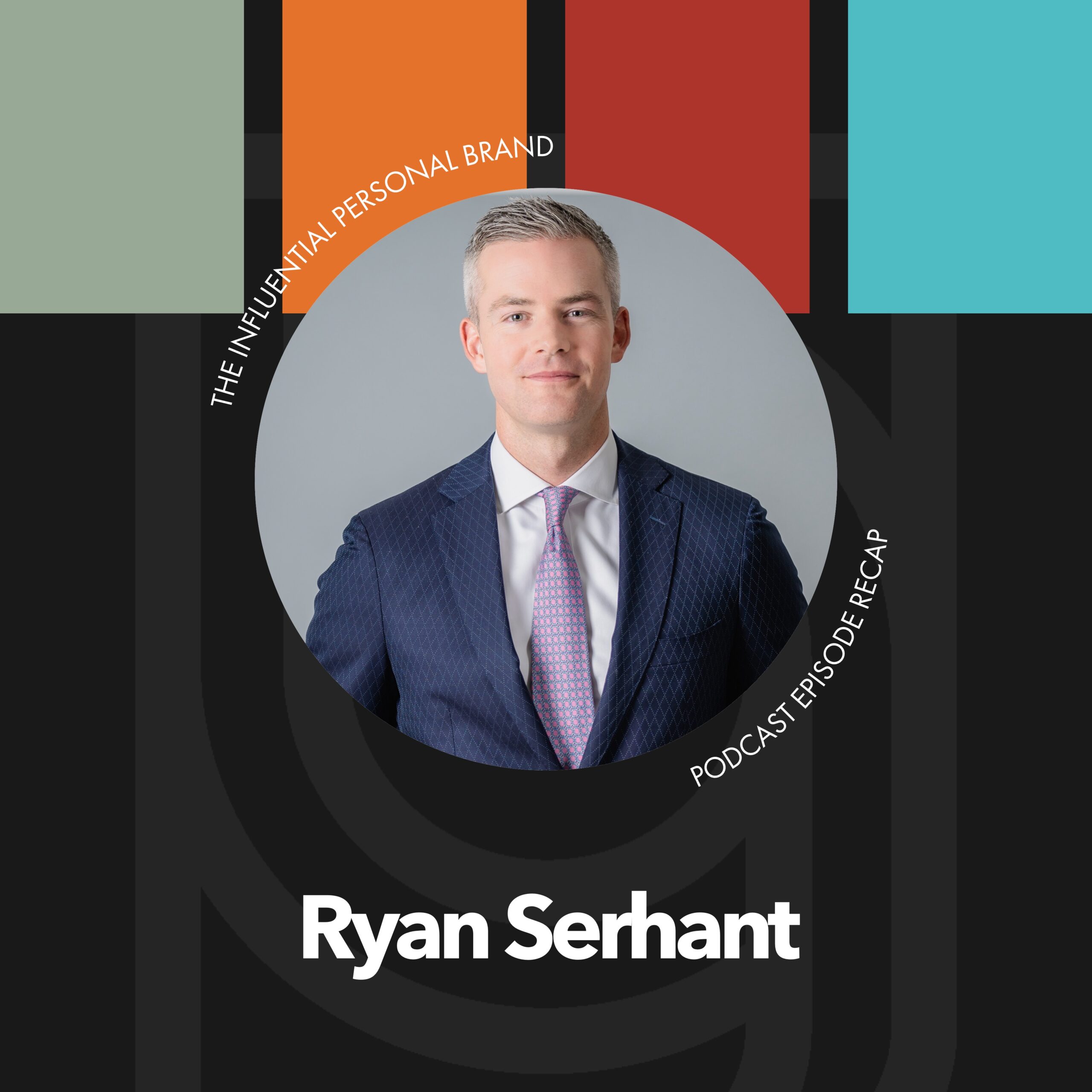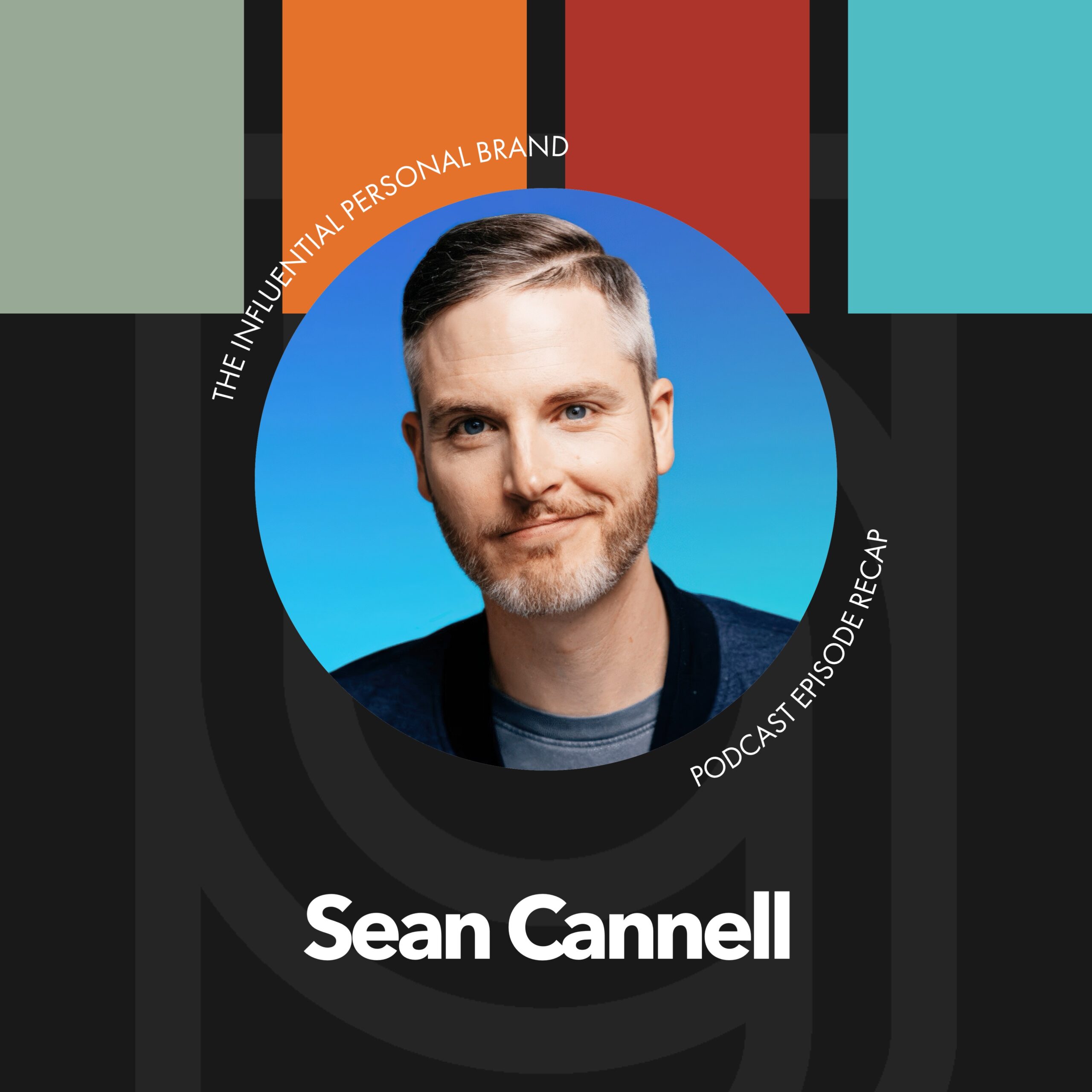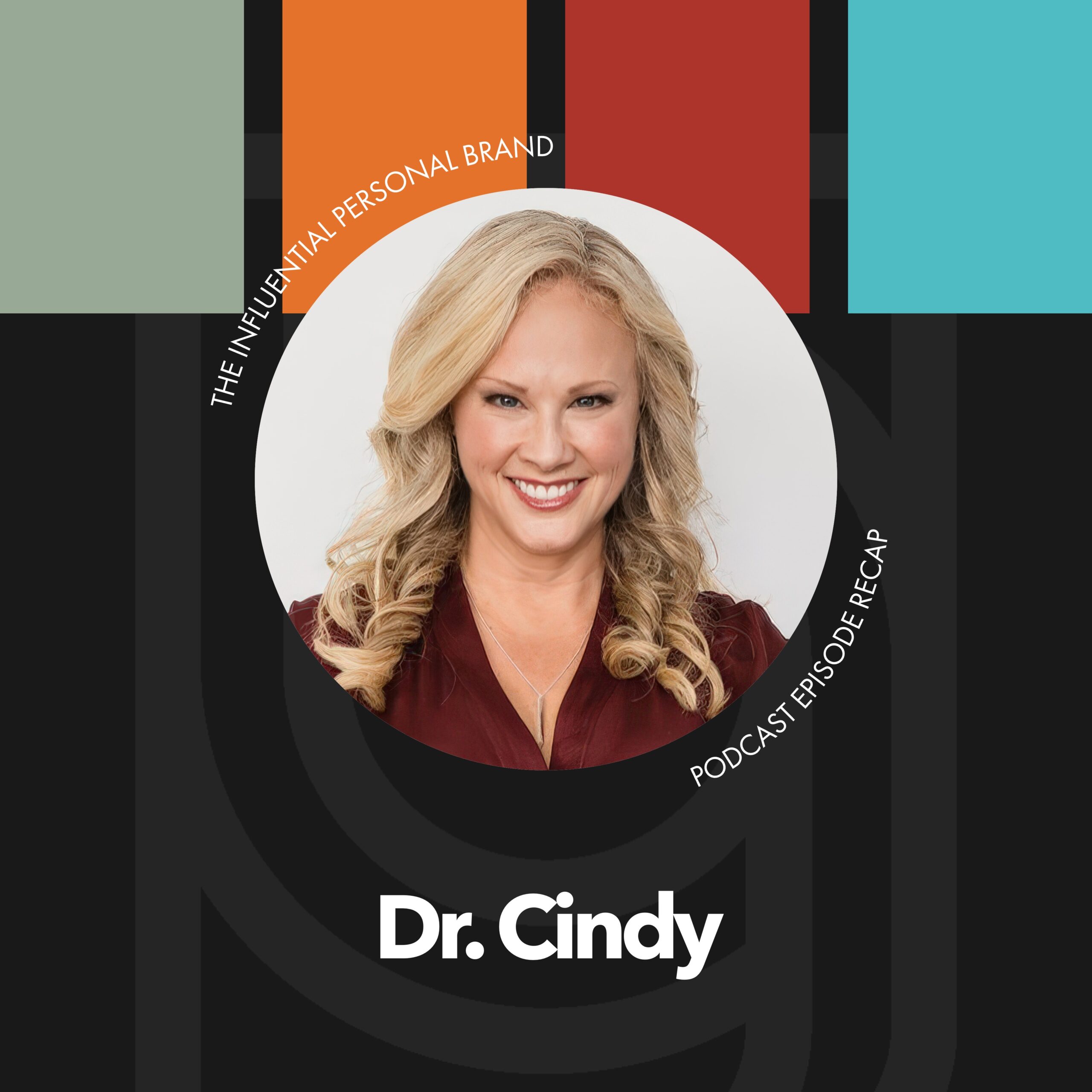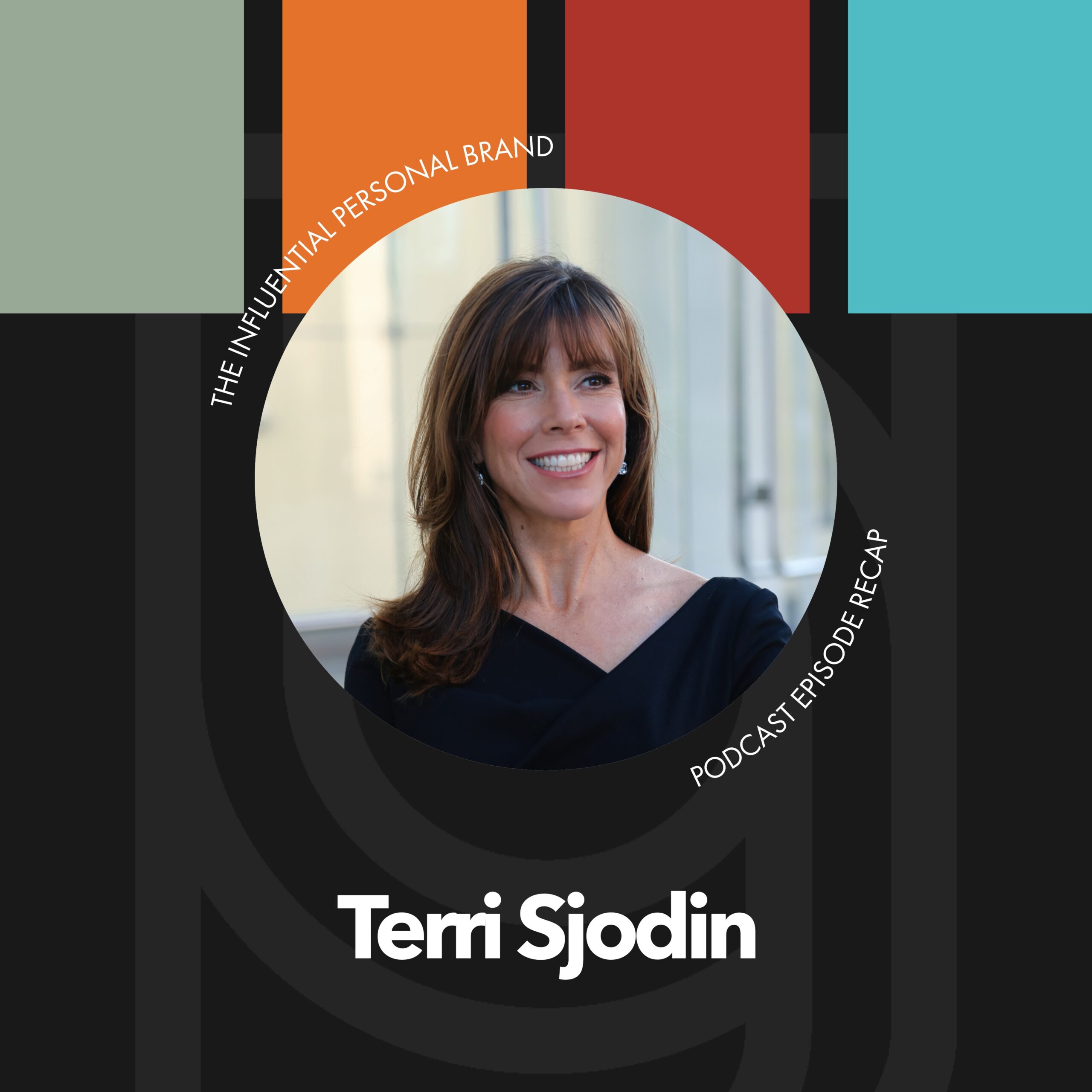RV (00:08):
Let’s talk about Email Strategy. You know, it’s funny, after all of These Years, email is still kind of the king when it comes to monetizing an audience. And, and I actually Just got off a call With our internal marketing team talking about the irony of how our email list we’re. This is very rare. I Think this is incredibly rare. Our email list
RV (00:33):
Is about twice the size of Our social media following, Like Most people, like almost all of our clients, it’s the Opposite. Where They’re social media following is like, you know, much larger, and then there’s some fraction of those people on their email list. Ours is the opposite. Our email list is, Is Like pretty massive, definitely massive compared to the Size of Our social media following. Most people
RV (00:57):
That have the size of our email list Are probably the people Who would have millions of social media followers. And so
RV (01:03):
Part of why that is, is it’s just where you place your focus, right? It’s like, what do you focus
RV (01:08):
On? And so I’m excited to share With you Three of my favorite email marketing strategies Of just Kind of like how we think about email in terms of the Way that we use it. And these are like my, my three favorite email marketing tips,
RV (01:26):
My three Favorite email marketing strategies. Of course,
RV (01:28):
This was inspired a little bit by my recent interview with Nathan Berry on our, on our recent podcast Episode. And So I just wanted to kind of share with you some of my philosophies and our Philosophies at, At brand Builders group About how we approach this
RV (01:41):
Subject and treats this subject Because frankly, like we do this pretty Good. I mean, I, I didn’t really, I don’t really Think of us necessarily of like, oh, we’ve got the World’s biggest email list, But it, it Did hit me and go,
RV (01:56):
Wow, That’s amazing. Like so many people are focused on growing their social media following and then trying to like convert that to a, to an email list Where The email list is really where the money is, right? Like the, the, that, that’s where The real long-term relationship happens. And that’s where a lot of the Trust takes place is, Is, you know, somebody’s email. So Let’s Dive into my three favorite email marketing strategies.
RV (02:21):
So the first strategy Is actually understanding something that we call the Four Types of email marketing. And this is actually something that we teach formally inside of one of our lessons inside of one of our courses.
RV (02:34):
So Our building your revenue engine course, Which is where we Teach our entire content marketing machine and how we convert it and nurture leads and automate trust.
RV (02:45):
There’s A section, a very specific section on email, and this is one of the things that we talk about. So this is a little bit of a, a preview for you if you Haven’t ever been through that. If you’re not one of our customers, and if you are one of our members, it’s A good refresh for you. So
RV (02:58):
Four types of email. The first type of email is the one that we all think of. These are broadcast emails, okay? So what is a broadcast email? It’s where you take your entire list or something that we would not recommend doing. We would never say, send it to your whole list. Take a segment of your list, you’ll have much more success with that. And you send everybody in that group the same message at the same moment. So whether somebody signed up for your email list today or 10 years ago, they’re all getting the same message at the same moment. And we used, we used broadcast messages to speak about things that are either timely or they’re big announcements. Those are like the two biggest reasons we use those. So timely, meaning it’s something happening in the news cycle, or it is something happening in the like like a holiday or something, right?
RV (03:53):
And we go, Hey, we wanna just like send out love about this, or it’s, it’s a big announcement. So, you know, we’ve done this recently a couple times in recent years where I can remember we’ve sent out big announcements when our clients have had huge wins, right? So we’ve had 13 clients that have hit the New York Times with a Wall Street Journal bestseller list. So whenever that happens, we’ve sent out some pretty big announcements. We’ve had now five clients go viral with TED Talks. I, we, we, we have another one that’s coming up the ranks that also could be taken off. And, you know, we, we celebrate client wins a lot of times and say, you know, cheer on everyone, Hey, check this out. So that’s broadcast email. It’s also used in launches would be another time that you would use that where you’re specifically saying, Hey, everyone show up for this free training or this, you know, webinar, or, Hey, we have a new whatever, a new podcaster, something like that.
RV (04:48):
So you’re, you’re launching something. So that’s broadcast email. The second type of email is something that people often think of, which I’m gonna call it long-term nurture, long-term nurture sequences. So this one is, you know, if you ever heard the term drip marketing or drip emails or funnels or automated emails, that’s kind of like this is going, you’re pre-scheduling out a series of emails where if you sign up today, you’re not gonna see the same, you’re not gonna get the same email today as someone who signed up 10 years ago, but you’re gonna get the same email that that person got on their first day, like hypothetically. So you’re the, and the, the number one way we use this is for long-term nurture, and specifically we use it for, we call it Evergreen magazine or easing, right? That’s kind of where that term easing originated from is to go, we’re gonna take your best of content of like what’s been on your blog post or what, what you’ve posted on your blog, and we’re gonna convert that.
RV (05:58):
We’re gonna turn that in to a greatest hits series. And so, the way this happens, right? If you think about a blog, every time you post something on a blog, whether it’s a podcast feed that you’re posting, like on brand builders group.com is where we post all our podcast episodes, but on rory vaden blog.com is where we post all of my blogs that I do every week. And so both of those, in both of those cases, they both get pushed down. And so some of the best content is from a long time ago, especially if you’re following one of our B B G mantras, one of our BBB G mantras is save the best for first, save the best for first. Always put out your next best piece of content as free content. Because what you, you don’t need to be worried about people consuming everything you have and then not buying from you.
RV (06:43):
You have to be worried about your content not being good enough that no one ever comes back, no one ever shows up again. So you’re always pushing yourself to get better and better and better and push your best stuff forward. So some of our best posts, a great example of this for me is you know I built my keynote speaking career on this story called Be the Buffalo, and it’s about buffalo’s versus cows. And you know, I, I published this intake the stairs in 2012. A lot of people use this, you know, use this. But I’m the original author of this story, and I was, I was telling this 10 years before it even showed up in my book, which was now 10 years ago. And that’s like a very popular story. People love it. And you know, it’s, it’s, it’s like one of my most highly trafficked pages.
RV (07:29):
Well, if you sign up for my email list today, you’re not gonna see that blog post, that blog post was five years ago. So it’s pushed way down. But I know that’s gonna be one of, that’s something that everybody loves. So I’m gonna take it and I’m gonna force it to you, and I’m gonna save the best for first. So just like we save the best for first with our kind of like blog strategy or podcast strategy going, what’s the next best thing I can put out fresh today? We’re also going to convert that into an a long-term nurture sequence of a greatest, basically, it’s your greatest hits. And we’re going, okay, I’m gonna take my my best blog post ever and I’m gonna make sure that everyone signs up, whether they sign up today or that was, you know, they sign up in six months, or they sign up in two years from now, they’re all gonna see this piece of content that I know everybody loves.
RV (08:14):
It performs really well. And I go, great. I wanna push my best stuff forward even to people who are showing up brand new. And so that’s how we use the, the long-term easing strategy. And so a lot of times, or not a lot of times, this is what we do, is we push our greatest hits into this email nurture sequence so that if you sign up for our list today, like you are gonna see all of our best stuff in addition to seeing some of our fresh stuff, which I’ll talk about in a second. Every month you’re gonna get one email, which is the greatest hits, and that’s the frequency that we do that is once a month. The other part that this does is this, make sure I’m talking to my entire email list at least once a month. So, and, and every time they get something from me, it’s, it’s not new content that I’m sort of like testing out and I’m hoping it works and that everybody likes it.
RV (09:04):
It’s like it’s proven, it’s time tested, we know. And so that’s automating trust, which is what we’re trying to do with our email list. We’re trying to automate trust. We’re trying to add so much value that people trust us and they go, you know what? These guys aren’t just trying to make money off me. These guys aren’t just trying to pitch me their next thing. Like, they actually give a crap about helping me succeed and they actually know what they’re talking about and they can help me. And so as I make money, I’m going to invest with them and, and hopefully they’re helping me make money, and then I’m investing, and then they make, help me make more money and then I invest more with them, right? Like, that’s the relationship we want to have with people, is we’re giving them free content to help them make money.
RV (09:42):
Hopefully they’ll make some money, they’ll invest it with us, then we’ll help ’em make more money, they’ll invest it more with us, right? And we’re trying to like, grow, grow with people. So anyways, that, that means that we have an email going out on autopilot so I can sleep at night just knowing my entire email list is gonna get one awesome email from me every month without adding any additional time to my calendar. Zero. So that’s the second type of email. The third type of email is one that you don’t hear very often and people don’t think about. And this kind of boggles my mind, and this is RSS email rss. What the heck does that stand for? RSS is a technical term, it stands for a real simple syndication. What it means in common sense language is every time I post a new article to my blog, automatically send an email to my list.
RV (10:33):
And this is amazing. First of all, it’s automating something for you. So you go, if you’re we have a whole nother process we teach called the content diamond, which you can go, you can go look@royvadenblog.com, I did a whole free training on this, on the content diamond. Well, if you’re doing the hard work of creating a content diamond every single week, then you want to tell people it’s out there. So we create this RSS so that automatically emails you. And, and by the way, if you can sign up for ours, right? If you go to, you can sign up for my personal1@roryvadenblog.com, and we give you other, we give you a free training as an incentive for you to sign up for it. And then you get, you get free training every week, right? So we’re sending you this free video for me once a week, every single week.
RV (11:20):
And they’re like these little five or seven minute videos that I do and their articles, we convert ’em into articles. And so now that’s on autopilot. We also do it@brandbuildersgroup.com slash podcast because Brand Builders Group doesn’t have a blog, but it has our podcast. And so we post all of our podcasts there every week so people automatically can sign up to be alerted. And so RSS is this technical, you know, piece of code that you put on your website behind this form that people can say, Hey, I wanna automatically get notified every time you post something new and boom. And so this is cool because it’s automated, but unlike the long-term nurture, which is your old stuff of your greatest hits, it’s all your newest stuff, your freshest stuff, your like most hyper-relevant thing that you’re talking about today, and they’re automatically getting that.
RV (12:10):
So that’s also how we sort of balance the, like staying relevant and super current with our email list along with making sure they’re seeing our greatest hits of all time. That’s like the timeless, you know, principles and stuff like that. So that’s the third type of of email and it’s easy, I mean, easy to set up. So we do that, that’s standard protocol in both internally and also what we teach in building your revenue engine, which is where we teach all of this in social media and getting on podcasts and speaking engagements, et cetera. So, and then the fourth type of email, the fourth type of email is short term nurture sequences. This one actually is more commonly associated with the term funnel. So short-term nurture sequences mean that only a targeted set of your email list is going to get a series of pre-written emails that are hyper-relevant to a behavior they’re engaging in now.
RV (13:05):
So again, out of revenue engine one of the lessons we talk about is building funnels and, and how do we, we actually dissect and show people behind the scenes of our actual funnels that we use to run our entire business. And we talk about the different one. You know, we’ve done summit funnels and we’ve got video funnels, and we’ve got webinar funnels, and we’ve got, you know, just a pdf like download free, free download and free call funnels. We have all these different funnels that we use and we show behind the scenes of each one and how we, how we, how we build them, right? So, but if you, if you, let’s say you sign up for one of our webinar funnels what would happen is you sign up for a free training and then it’s going to say, Hey, thanks for signing up.
RV (13:48):
Here’s a link to the free training you requested. And then what it’s gonna do is we use marketing automation to that can tell us, did you ever actually click the link in that email and watch that free training? If you didn’t, it’s gonna automatically send you another email, like 24 hours saying, Hey, by the way, little reminder, thanks for signing up for our free training. Don’t want you to miss out, you know, here it is as promised, you know, when you have a minute, check it out. Boom, right? And then we’ll send a couple reminders to, to watch the free training. Now, as soon as you click that link and you watch the first couple minutes of the training, again, we’re using Mark marketing automation here, which is what we, we teach people do, and we also actually build templates to help you that we actually can do this for you, right?
RV (14:32):
So we’re building all these templates right now to actually do the programming and coding for you. So what would happen is it’s then gonna shut down that, that we call that the the training sequence, or sorry, we call it the the watch sequence, which is, you know, emails that are designed to get you to watch, watch the free training that you signed up for. So let’s say that you watch five minutes of it. Well, as soon as you watch five minutes of it, we’re using marking automation to shut off that sequence that’s reminding you to watch it. Cuz now we know you already started watching it, but then it starts a new sequence, which would be invisible to the untrained eye that says, let’s say you watch seven minutes, but then you abandon the video, it’s gonna start a new sequence called the finish sequence and it’s gonna say, Hey, we noticed you started watching the video, cuz we can tell, but don’t forget to finish because here’s some of the great things that come at the end.
RV (15:24):
And so then we’ll send ’em a few reminders to try to get them to finish watching. And then if they finish watching, but then they don’t like take the action, whatever the action is, we’ll say, Hey, you know, here’s a couple reminders of like whatever the action was that we’re trying to get them to take. And so you’re using these short term you’re using these short term sequences to move them along, and that’s the fourth type of email. So everybody is, everybody in that group is seeing the same emails similar, it’s like, it’s like kind of a, it’s kind of like a cross of all of these because it is a nurture sequence, but you only get put into that nurture sequence in a very specific moment in your journey where you have clicked on a video or requested a free call, or you’ve watched something or downloaded something very, very specific.
RV (16:14):
And so, you know, like one of them again if you go to, if you go to rory vain.com, there’s a free training section and there’s a, you can download our trends and personal branding national research study. So if you download that, that’s a lead magnet. It’s a free lead magnet. It’s incredible. It’s like this 60 page study, this of all this data that we paid tens of thousands of dollars to get, we give it away for free and then it, it starts a nurture sequence. Right? So everybody who, the only people who ever see that are the people who downloaded that specific thing. So it’s amazing. So anyways, those are the four types of email. I know that’s a lot, but, and that’s, that’s, you know, advanced, but that’s the kind of stuff we’re teaching and that’s like super, it’s advanced, but it’s simple, right?
RV (16:57):
But you go, you gotta build out all these different types. So it’s not just, you can’t just think of, oh, I send emails and that, or I send an email once a week. It’s all of these, it’s at least four major types of email that make up your overall email strategy. So you gotta like understand what’s the mix of these, and also the technology and also the timing of how they intersect, right? So that’s one of the templates that we provide to people is the actual marketing automation campaign that goes, Hey, make sure you’re not emailing people too much. And, you know, give them a chance to opt in and outta stuff and, and, you know, make sure they’re not getting, you know, a bunch of emails all at the same time. Which leads to number two, okay? So this is the number two thing that I wanted to talk to you about.
RV (17:40):
So my second favorite email strategy, which is really important is control the email opt-outs yourself, not the platform. So what do I mean by this? It means that every email marketing tool doesn’t matter which one you use, right? And, and we use all of ’em with clients and we like all of ’em, like we’re kind of like, you know, there’s certain ones we like more than others and whatever, but, but to us, the strategy is what matters more than the technology. The strategy matters more than the technology. And for example, all of the email marketing tools have an opt-out function. They have to, by law, this, this law is called gdpr, right? GDPR compliant. There’s, there’s all of this, this compliance now with how emails needs to be sent and permission-based marketing and all this sort of stuff. So they have to, when an email goes out, there has to be an option to unsubscribe.
RV (18:32):
Well, if you send an email to your list, let’s say you send a broadcast email, and let’s say you send it to 10,000 people on your list every time you send a broadcast email, by the way, people unsubscribe every single time. They always do. So don’t be offended or upset by that. And that’s not a bad thing, it’s not a bad thing when people unsubscribe, it’s a good thing. You only wanna be emailing people who wanna hear from you. But if people just hit that unsubscribe button, it starts to affect sort of like your ranking with the email service providers. And so what we like to do is, is we like to just, we give an opt-out function. But what the, the, the, the, we make a, we actually make a more noticeable link for people to opt out somewhere above the default one that is built in and tied into the tool where we say, if you don’t wanna hear from us anymore, click here.
RV (19:24):
But we also con control the languaging, which a lot of times you can’t with the default setting or not as much. And we’ll, so we’ll say something like this, if you say, Hey, if you want to hear from us less often or more often, click here to control your preferences or unsubscribe altogether, something like that. And then they click on it and then it takes them to a, a form where they can now manage. And we usually give them like four options in our standard suite it. And, and option number one says, you know, I’m a super fan, email me every time you have something new for me. And when they select that, it’s gonna apply all the appropriate, appropriate tags for them to get the broadcast emails, which we send once in a while, the evergreen monthly easing, which is on autopilot once a month, and the r s s feed.
RV (20:10):
So that means they’re gonna get at least one r s s feed every week and one email once a month. So that’s five. And then broadcast emails whenever we send them, which might be once every other month or something like that. So they could get maybe six emails in a month plus any other short-term nurture sequences that they are in. If they get into one of our, you know, free trainings or something like that, then the, the next button down would say something like this. They would say it would say something like I only wanna hear from you once a week. So we go, okay, no problem. We’re going to remove them out of our Evergreen magazine and we’re just gonna add them to the rss. So they’re just gonna get the most recent stuff once a week. And it’s like, download our most recent podcast, watch our most recent video or, or read our most recent blog posts, which are all kind of the same thing.
RV (20:58):
If you’re running the content diamond in and it’s just gonna push ’em to our blog feed and you go, great, once a week, the next person says, ah, I really only want to hear from you once a month. Okay? So that’s option number three, just once a month. So now they’re going to only get our oh, and by, and by the way, on that second one I wanna hear from you once a week we would say RSS plus broadcast, which we send once in a while. And if they say, oh, I really wanna hear from you once a month, we go, okay, great, once a month, let’s unsubscribe you from our RSS feed so you’re not hearing from us every week, that’s too much for you. And we go, but you do wanna hear from us? So we go, great, let’s, let’s put you on the evergreen nurture.
RV (21:33):
Now you’re hearing from us once a month but we are, we’re also gonna keep you on our broadcast e e email, not not, yeah. So our long-term nurture, which is our, our monthly easing and the broadcast e email, which sends, you know, sporadically once in a while. So those are the top three. And then the fourth one will say, ah, you know, it’ll say something like this I only wanna hear from you once in a while, you know, once in a great while or whenever you have something big to share. And so we go, great, unsubscribe ’em from rss, unsubscribe them from long-term nurture, easing, unsubscribe them from oh, but keep them subscribe to the broadcast tool, right? So we’ll keep them on the, the broadcast tag. And then the last one would say, I never wanna hear from you ever again.
RV (22:18):
Please stop emailing. So I guess there would be five options counting that, right? So boom, boom, boom, 1, 2, 3, 4, 5. So now what’s happening is, first of all, we’re controlling their preference because a lot of times people don’t wanna unsubscribe completely. It just might be like, they’re like, bro, you’re overwhelming me, ro like, it’d be like, Rory, I love you, but dude, I don’t wanna hear from you twice a week. Like, that’s too much Rory in my life, which I can, I can appreciate. Well, I’m not offended by that, right? Some people are like, gimme all the Rory, you can give me like I need, I need, I want motivation, I need inspiration as much as I can get it every day I am like, yeah, you know, great my people, but it’s whatever your threshold is, right? And you have some people like to hear from you for different things or it’s just, what do they have going on in their life?
RV (23:02):
What do they have capacity for? They re they might be in a season of like, man, I’m not trying to gum up my whole inbox. And you know, you just, a lot of it doesn’t have to do with you, it has to do with them. And they’re just going, I wanna be able to read what you send me and maybe I don’t have the time, or your topic isn’t so hyper relevant at this moment that I’m gonna make time to read everything you’re sending me and now you’re annoying me and so I’m just gonna unsubscribe, right? So you’re, you’re wanting to give them a chance to sort of choose their own adventure here. And that’s what we’re, and that’s what we’re doing. So control the opt outs yourself, l and and then the other thing is if they hit never talk to me ever again, we add an unsubscribed tag that anytime we send an email to, we filter against that tag.
RV (23:42):
So we literally opt them out and we will never, we will never send to them again. But it’s not hurting our rankings with our email service provider. And so that’s part of why we do that. And you know, anyways, so that’s that. And then the, my third favorite email tip is super short. It’s super clean, it’s simple, but if you’re not doing this, make sure you’re doing this every single time you send a broadcast email, which is send to the unopens, send to the un unopens. So what does that mean? Well, okay, we’re talking about broadcast email, remember, with four types of email broadcast, long-term nurture, RSS and short-term. So we’re talking about the first type here, which is broadcast email. By the way, I hope you’re not listening to this on two x speed, cuz if you are, this is going really, really fast, .
RV (24:25):
So anyways, when you send a broadcast email, which is to a wide swath of your list all at the same time, boom, everyone gets a launch email or a a, a timely email or something like that. One of the ways to like literally double your opens is you send it to all these people, however many it is, a whole bunch of the people aren’t gonna open like some, usually something like 80%. So if you send an email to 10,000 people, okay, typically like 20% are gonna open and 3% are gonna click through roughly, right? Something like that. So that means if I send it to 10,000 people, 8,000 of ’em aren’t even opening the email, right? So 20% are opening the email and then 17% are opening it, but not clicking Well for that 20%, you know, they saw your email. So we go, let’s not annoy them, right?
RV (25:19):
They, they, they already have it. We know they’ve seen it, but most of the good email service providers will tell you this, 80% or these 8,000 people never even opened your me email. So what does that mean? That means it’s like they never got the email, they never even saw it. So you’re not ano you’re not annoying anybody to send an email to people who never opened it the first time because for them it doesn’t e it’s, it’s not like, Hey, you’re bugging me, you keep sending me the same email. They’re going, no, they, they never saw it, right? Like, you sent the email, they never saw it, they never opened it, they don’t even know that you sent an email. So you send just to the unopened. So you would just send to that segmented list, you could send the exact same message. We, we do, we we literally go send, send a broadcast three days later, take everyone who has not opened the email and send it again.
RV (26:11):
Because if they haven’t opened it within the first three days, they probably not gonna open it, right? So we send it to 8,000 people, the exact same email, and guess what the number of opens in total, it’s gonna be like 20% of 8,000. And, and sometimes it’s higher, sometimes you get a higher percentage on, you often get a higher open rate percentage on a smaller list. That’s almost always true. So you might get another 2000 opens off of your send to 8,000. Well, the net effect there is instead of 2000 opens from your email of 10,000, you got those 2000 plus you got another 2000 from your email to 8,000. And you could actually keep doing this saying, okay, well now there’s, you know, roughly 6,000 people who didn’t open that email I could send to them. So you could keep doing it. We usually just do it twice.
RV (26:57):
Sometimes we’ll do it three times, but if they’ve never opened the email, they, they never saw it. Like, you’re not annoying anybody. So at least do it once. Always, always with broadcast emails and it’s so simple, right? Then these are things where you just go, man, of course like that makes so much sense, but you don’t know until you know, right? And you know, if you don’t have a strategist like us, you know, our team walking you through it, you just literally leaving money on the table, that one thing could literally double the income of your entire next launch or promotion or thing by such a simple tactic, right? Imagine adding up all of those tactics over and over and over again and y’all, this is, this is what we do. So at any point if you want to talk to our team, I would encourage you to do it like we have so much to share and teach you.
RV (27:46):
And so you just go to free brand call.com/podcast to request that call. If you’re not ready to do that yet, I would encourage you, as I said, go to brand builders group.com/podcast and subscribe there and or go to rory vaden blog.com and you could subscribe there and we’ll send you lots of free stuff so that you can be growing your business and building your income and, and increasing your mindset and your motivation and your productivity and all the things that we teach and talk about to help you make more impact in the world. And then hopefully you start making some money from that and you go, all right, I’m ready to level up. So when you’re ready to level up, request a free call free brand call.com/podcast. In the meantime, share this episode with someone who you think would l benefit from it and listening to it. And just thanks for being here, right? We’re, we’re, we’re trying to add more and more value to your life constantly, whether you’re paying us or you’re not, our whole goal is to just add value to everybody as much as we can. And the fact that you’re listening gives us the opportunity to do that. So we appreciate you being here. We’ll catch you next time on the Influential Personal Brand podcast.

